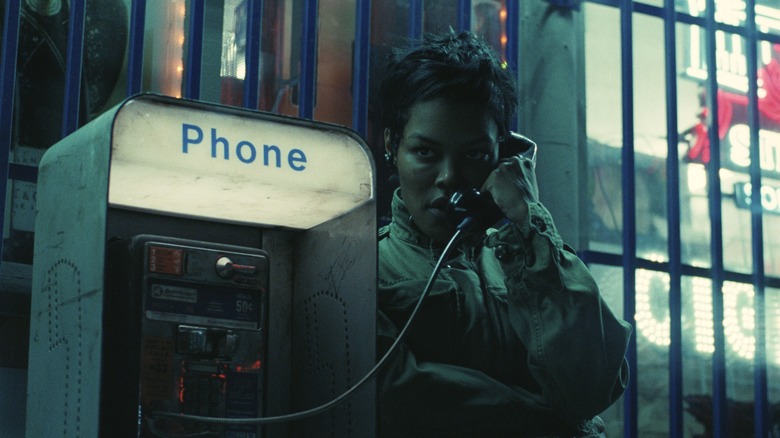Adapted from the memoir of the same name, HBO’s latest mystery series dives into Tokyo’s underworld with slow and steady precision.
You’ve had your grimey crime shows in New York, Miami, Los Angeles — but now, it’s time to give Tokyo a try. Boasting a gritty, neon aesthetic of noir counterparts like “Blade Runner,” and hosting the Yakuza crime syndicate, the Japanese city is the prime location for a reporter to uncover a career-making crime story. That’s the conceit behind “Tokyo Vice,” a new HBO Max series based on the 2009 memoir of the same name by journalist Jake Adelstein. Adelstein’s chronicle of his time as an American journalist working for “Yomiuri Shimbun,” one of the five major Japanese newspapers, found popularity thanks to its authenticity and true crime appeal. The small-screen adaptation keeps the heart of Adelstein’s story intact, conveying the struggles and thrills Adelstein faces while working the crime beat as the first foreign reporter at the paper. Where the show breaks from the memoir is in narrowing its focus to one intriguing mystery and adding a slew of fictional characters that, like Adelstein, must break the rules to get ahead in Tokyo’s seedy underworld.
Bringing Adelstein to life is Ansel Elgort from “West Side Story,” who is believable in his turn as the persistent, anxious journalist determined to investigate the stories others ignore. Elgort had to learn Japanese for the role, though he occasionally breaks into English when talking with fellow American Samantha (Rachel Keller) or his coworkers at the fictional “Meicho Shimbun.” Playing opposite him is Ken Watanabe as Detective Hiroto Katagiri. Calm and authoritative, Katagiri is the perfect foil to Elgort’s well-meaning, but occasionally naive, Adelstein. Watanabe makes the character memorable and likable, despite being a reserved presence in the first few episodes. The audience is prompted to wonder how he commands such respect from the shadowy men that make up the Yakuza gang Adelstein is investigating — and how the duo end up in the tense closed-door meeting that serves as the cold open for the series, set two years ahead of the events of the show.
Elgort and Watanabe aren’t the only ones serving up interesting performances. Keller’s Samantha is a confident hostess saving enough money to open her own club. When she’s not bonding with Adelstein over their fish-out-of-water experiences or flirting with tipsy patrons, she’s helping out her fellow hostesses and holding her own against the morally dubious club owner. The show’s other main female character is Adelstein’s boss at the paper, Eimi Maruyama (Rinko Kikuchi), who has regrettably limited screen time in the first three episodes. While several of the paper’s higher-ups look down on Adelstein due to his foreigner status, Maruyama treats him with the same tough love she shows the other reporters. In a scene that perfectly conveys how frustrating it is for Adelstein to adapt to the “Meicho Shimbun,” she rejects draft after draft of a simple article until he’s met the paper’s impossibly high standards. While it would be easy to write her as yet another obstacle in Adelstein’s fledgling career, Maruyama appears to be a potential ally for the impulsive journalist — at least, she’s not his enemy.
Rounding out the main characters, of course, is a member of the Yakuza: brooding, violent Sato (Shô Kasamatsu). As Adelstein and Samantha warm up to each other at the hostess club, Sato looks on with apparent jealousy. He cryptically takes Samantha to a back room of the club to try on an expensive dress, only to forbid her from buying it when she expresses interest. If Sato’s falling for her, he’s doing a poor job of expressing it. Nevertheless, Sato seems primed to nurture a personal vendetta against Adelstein later in the season — either because he discovers that the latter is a journalist, or because he gets territorial over Samantha, or both. For now, the two share a surprisingly lighthearted scene at the hostess club, bantering over the counterfeit accessories market without an awareness of each other’s occupations.
While it’s natural for a show to spend its first few episodes introducing characters and setting up conflicts, “Tokyo Vice” can’t help but drag in terms of its mystery element. Despite being told by hedonistic cop Miyamoto (Hideaki Itô) that there is “no murder in Japan,” Adelstein starts to investigate a mysterious set of ‘suicides’ that he connects to a Yakuza-run loan shark enterprise. But no matter how hard he presses with his editor, the cops, and the families of victims, he can’t seem to penetrate the many smokescreens that obscure the Yakuza’s inner circle from their crimes. Once he teams up with Detective Katagiri, he seems to have an in — just don’t expect the fast-moving, tightly-paced mystery of your typical investigative series. “Tokyo Vice” is a slow burn. It devotes an equal amount of time to Adelstein listening to tapes from his sister on his Walkman and commiserating about his job with his coworkers as it does to a tense stand-off between members of the rival Tozawa and Chihara-kai gangs. The attention to character building does lend the show a nice depth, even if it slows down the action one expects from a show with “Vice” in its title.
Ultimately, “Tokyo Vice” can laze its way through its primary mystery all it wants. The show’s promising characters and well-crafted shots are sure to keep your attention when the plot isn’t. For all the dangerous elements brewing in the shadows, the show makes Tokyo look vibrant and charming. It’s not hard to see why Adelstein and Samantha chose to make their new lives there. Whether Adelstein is perusing the options at a quaint local market or taking the bus to the serene enclave where Katagiri and his family reside, the cinematography makes his surroundings seem picturesque. The noir genre has its influence, as well — the blue-tinted interior of the hostess club could pass for one of the joints in the reimagined Los Angeles in “Blade Runner,” while intimate, shadowy close-ups of Adelstein, Samantha, and Sato convey the emotional nuance most noir works achieve with a voice-over.
Episodes one through three raise a number of questions, not just about the crop of unexplained suicides, but about what characters like Adelstein and Samantha are running from in coming to Japan — and where they’re going to end up by the season’s end. Meanwhile, Watanabe and Kasamatsu’s characters offer a necessary, enlightening alternative to the expat storylines. These are the guys who know Tokyo inside-out and will do whatever it takes to survive its jagged edges. The price of that survival is yet to be seen, but given the glimpses we’ve already had of the city’s cutthroat underworld, it’s certain to be steep.
Grade: A
Created by: J.T. Rogers
Starring: Ansel Elgort, Ken Watanabe, Rachel Keller
Release date: April 7, 2022
Rated: TV-MA
Image courtesy of New York Times
TV Review: “Tokyo Vice” – Episodes 1-3
Apr 17, 2022
0
About the Contributor

Bailey Bujnosek, Senior Staff Writer
Bailey is a fourth-year English literature and psychology double-major who watches too much reality tv. She likes listening to Mitski, Ricky Montgomery, & Fiona Apple. Her favorite movie is “Whiplash,” the “Black Swan” of jazz drumming.
More to Discover









